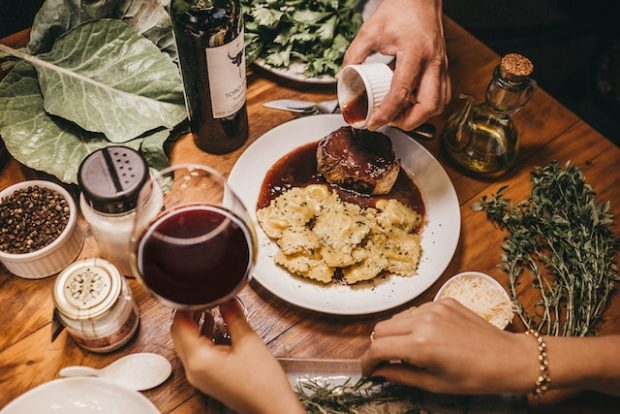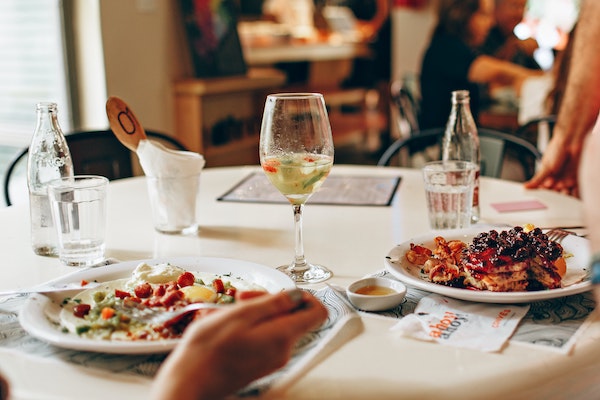Diners of all shades can agree that learning the art of wine pairing with cuisine is worthwhile since it elevates the overall dining experience. Your taste receptors will have everything to discuss at dinnertime rather than merely consuming food to sustain life.
You can accentuate your meals’ flavors, textures, and characteristics with a glass of wine. You can find the perfect bottle of wine for every meal due to the large selection of wine varieties on store shelves.
The numerous choices might be confusing to locate the right combination. However, food pairings don’t have to be tricky; they may be simple and enjoyable.
Don’t worry if you’re new to wine and unsure what foods can bring out the many delicious flavors. This guide will make it simple and classy for you to taste your way down the wine aisle and assist you in matching the appropriate wine and dishes.
Consider Your Preference
It is impossible to overemphasize the value of your preference when trying to determine what foods go best with wine. Everybody has different tastes in flavors, scents, and levels of sweetness. Finding your ideal wine and dish pairing begins with knowing what you appreciate.
Spend some time sampling various wines. The best way to start this voyage is with a California wine or mixed collection of single-serve bottles. Think about how a wine tastes in your mouth as you taste it. Is it luscious and thick or relaxing and energizing? Observe the flavor profile after that. Is it tart, bitter, sweet, or fruity? Identify whatever deeper notes you can.
Your responses to these questions will help you determine what you want, ensuring your meal and wine pairings become simpler.
As easy as it may seem, ensure pairing your favorite foods with wines. If you don’t like reds, you probably won’t start once they are served with a delectable dish. So, stay with what you enjoy. Today’s possibilities are so diverse that you’re sure to find the ideal mix.
Consider the Food and Wine Flavors
The time has come to add some delectable treats to pair with your wine once you’ve established what you like. Typically, a wine can match or compliment food, but it shouldn’t be at odds with it.
Salt, acid, sugar content, bitterness, fats, and spices are some of the fundamental flavors of food. Take some time to think about these tastes in your dish because they will all be in combinations in every food.
The wine typically has bitterness, sweetness, and acid. Because they often contain more acidity, white, sparkling, and rosé wines can sometimes be sharper. Red wines typically have a strong, harsh flavor, while dessert wines are sweet.
The two guiding concepts of food and wine pairing (contrasting and congruent pairings) come into play when experimenting with flavors.
Contrasting Pairing
Contrast or complementary pairings aim to balance each other out by bringing out the best in each other’s richness.
As long as you take care to avoid a collision, picking opposite tastes might enhance each of their flavors rather than matching them. For instance, a sweet wine and a spicy food might go together perfectly; while having different flavors, they enhance one another.
Congruent Pairing
The densities, flavors, and aromas must be as similar as feasible to follow the congruent pairing approach. Harmonious pairings happen when food and wine have similar flavor profiles.
White wine and light seafood dishes with citrus go well together since they are typically acidic. A full-bodied red wine would pair nicely with grilled steak or spicy Asian food since the tannins in red wines cut through the fat in red meat.
Pair Bold Wines with Earthy Dishes
Ensure the wine and dish’s weights are compatible. When a glass of wine and food are equally vibrant, neither stands out as superior.
For instance, you should pair your single-serve red wine with anything robust enough to live up to it because it has deep and rich flavors. You can best enjoy red wine with a hearty, rich meal that is high in fat. To achieve a balanced richness and weight, serve red wines with strong cheese, beef stew, and lamb.
Ensure Your Wine Choice is Sweeter Than the Dish
A dry wine can taste bad if the food is sweet. Choose a wine that is sweeter than the meal to avoid unpleasant tastes.
For sugary foods, stick to this rule and select wines with more residual sugar. To experience the perfect sweet flavor combination, serve dessert wines with soft cow milk cheese, sweet pies, cakes, sweet sauces, pancakes, or chocolate.
Consider the Texture
Fish or salads go nicely with light wines, whereas fatty dishes are best paired with rounder wines. An invigorating and lightening addition would be a dry wine with high acidity, such as white or rose wine.
When paired with fatty foods, wine becomes more delicate, tannin-softer, and less acidic. Despite no taste, fat creates a thin coating surrounding the oral cavity that absorbs wine’s drying, sticky tannins, and strong acidity. You can effectively conceal the extra wood flavor in a barrel of earthy wine with scrambled eggs and bacon.
Consider the Acidity
Pay close attention to the wine’s acidity. In general, you want your wine to have a higher acid level than the dish to wash the palate as the meal’s attributes soften the wine’s acidity. The wine might seem thin and weak if the food is more acidic.
In addition, creamy meals often don’t go well with high-acid wines.
Taking Your Meals to a Top Level with Perfect Wine Pairing
When you discover the ideal wine combination, you can experience the roots of good dining. Red, sparkling, white, rose, and dessert wines are only a few of the many varieties available, and any of them may make your next dinner a special occasion.
This comprehensive guide encourages you to explore wine pairings and find your unique favorites, from comprehending the many taste profiles to selecting the ideal acidity and textural complements.
The best thing about pairing wine and food is that there aren’t hard-and-fast rules; your imagination and personal tastes are your only constraints. Start with these fundamental suggestions to locate a great recipe to pair with a rare bottle of wine, but don’t hesitate to experiment and have fun.
Read More:




